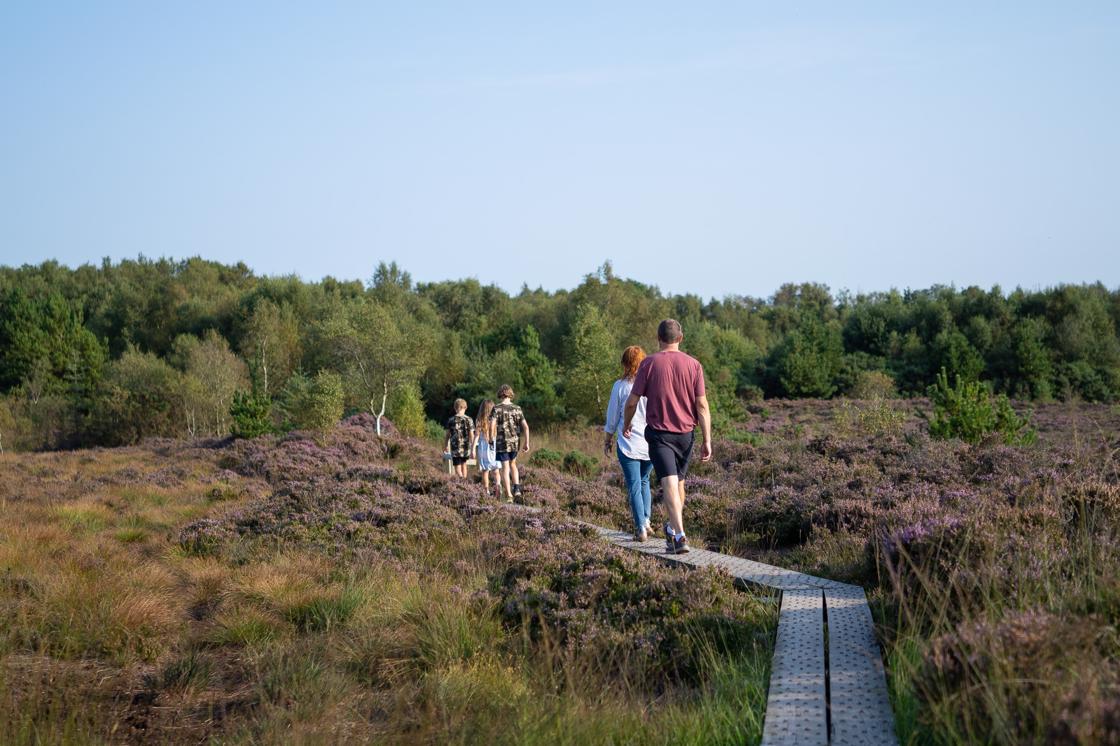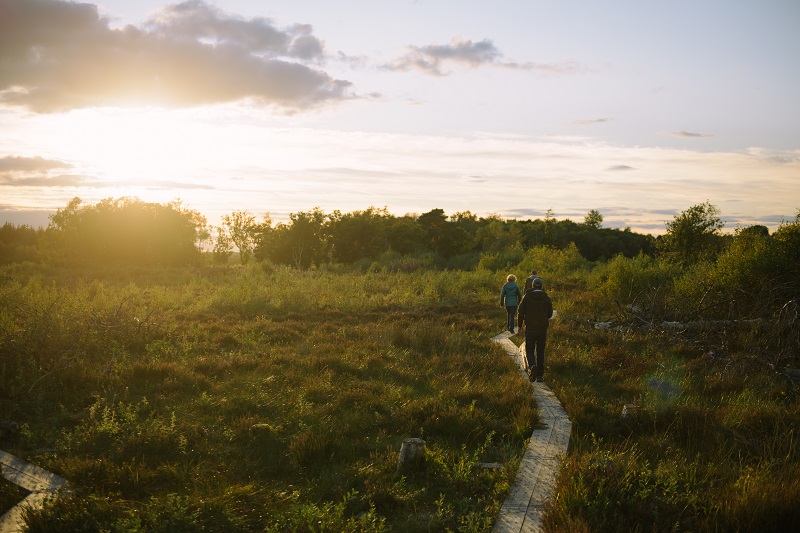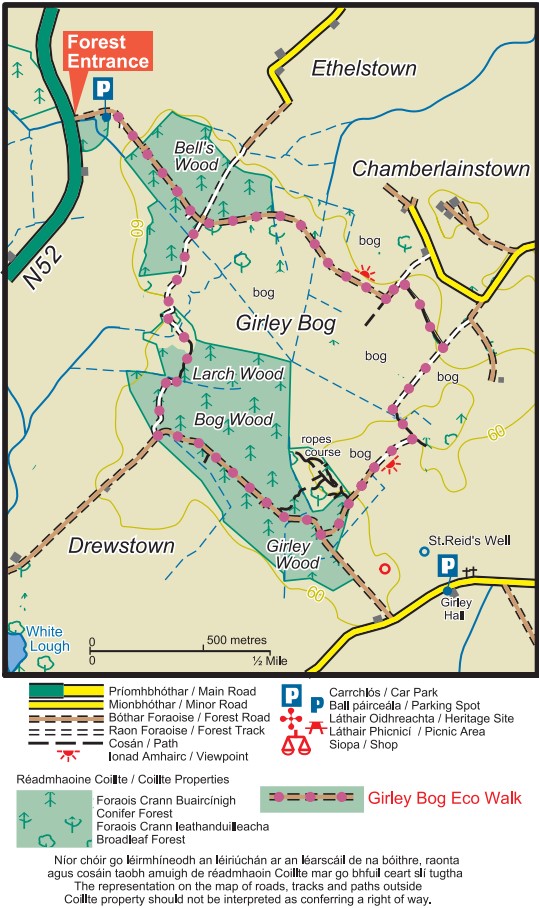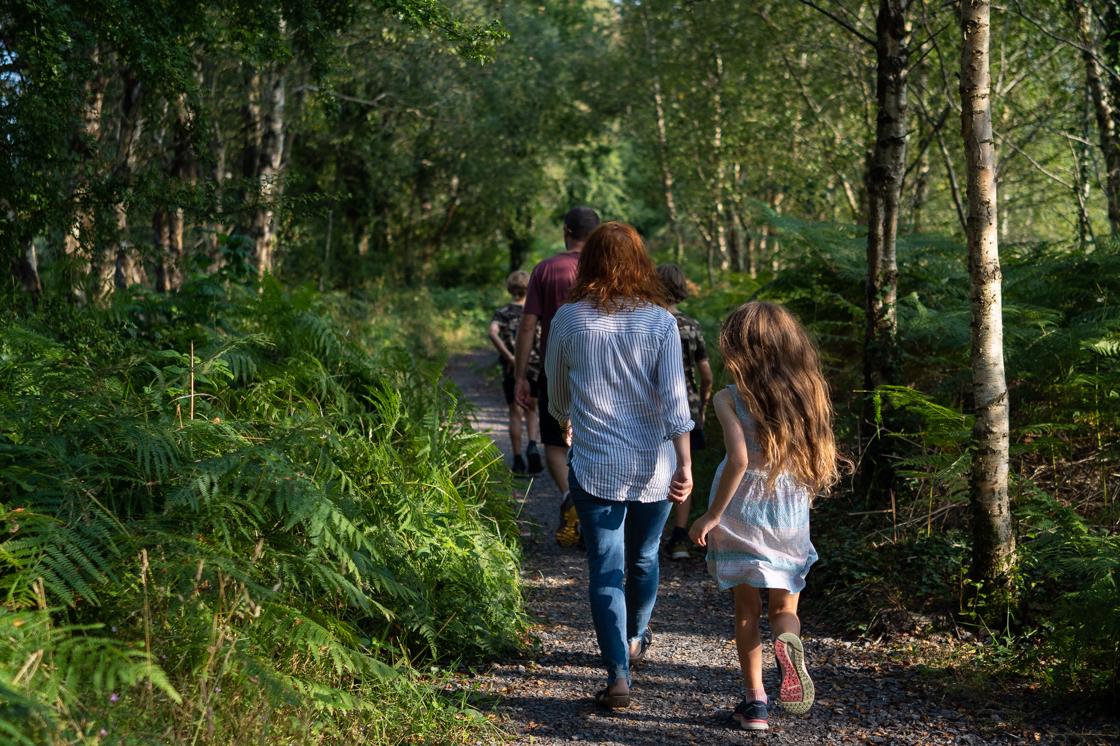Girley Bog Eco Walk is a 3.5 miles/ 5.6 km waymarked National Loop. It covers varying landscape of forest and bogland. The terrain is flat and uneven and walking boots are recommended. The first section of this looped walk takes you through a tranquil Coillte forest, where there is a coniferous forestry plantation located on high bog.
After this section, you will follow a forest track before entering Girley Bog, one of the few remaining raised bogs in County Meath. Girley Bog is a site of considerable conservation significance, as it comprises of a raised bog, a rare habitat in the E.U. and one that is becoming increasingly scarce and under threat in Ireland. There is a wonderful variety of birdlife, plant and animal life and this is displayed through a number of interpretive panels along the walk. Listen out for the birdsong as you walk. The loop finishes with a walk along further country lanes before tracing your steps back to the carpark.



